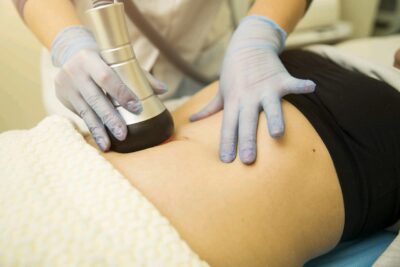Dealing with Peyronie’s disease can be challenging. But the good news is that there are various treatment options available. These can help manage this condition.
If you or someone you know is seeking information about Peyronie’s disease treatment, you’ve come to the right place. In this guide, we will provide an overview of the treatment options. These will empower you to make informed decisions about your health and well-being.
So, get ready and read on!
Medications
One of the primary non-surgical treatment options is medication. Several medications can be prescribed to help reduce plaque size. They can alleviate symptoms and improve penile curvature.
Here are some commonly used medications.
Pentoxifylline
Pentoxifylline is a medication that improves blood flow. it may be prescribed to promote tissue healing. It also reduces inflammation associated with the disease.
It works by increasing the flexibility of red blood cells. This improves blood circulation and reduces the formation of fibrous tissue.
Collagenase Clostridium Histolyticum
Collagenase clostridium histolyticum is an enzyme medication. It helps break down the collagen build-up in the scar tissue.
This reduces the size of the plaque and improves penile curvature. This treatment is known as Xiaflex and is approved by the FDA for the treatment of Peyronie’s disease.
Interferon-alpha 2b
Another medication used is interferon-alpha 2b. Interferons are naturally occurring proteins. They play a role in the body’s immune response.
They are thought to modulate the fibrotic process. This is by reducing collagen production and promoting tissue remodeling. It can be done via injections into the plaque or as a topical application.
It is important to note that the effectiveness of medications may vary from person to person. Your healthcare provider will assess your condition. They will determine the most appropriate medication for your specific needs.
They will consider factors. This can include the severity of the disease, your overall health. They will check for any potential drug interactions or allergies.
Penile Injections
Penile injections are another non-surgical treatment option. Treatments such as verapamil can be directly injected into the plaque. This treatment is a calcium channel blocker.
Verapamil injections aim to soften the scar tissue and reduce the curvature of the penis. Interferon, a protein, may also be used to promote tissue healing and reduce plaque size.
These injections are done by a healthcare professional and need regular appointments. Your doctor will discuss the benefits and side effects of these with you.
Penile Plication
Penile plication is a surgical procedure used to correct penile curvature. During this procedure, incisions are made on the opposite side of the penis to the plaque. The surgeon then shortens the longer side of the penis, effectively straightening it.
The excess tissue is removed. Then, the remaining tissue is sutured to maintain the corrected position.
This is a simple procedure with a shorter recovery time. This is compared to other surgical options. It is typically recommended for individuals with stable Peyronie’s disease and minimal plaque.
Penile Grafting
In more severe cases where there is extensive plaque or significant penile deformity, penile grafting may be necessary. This surgical procedure involves removing the scar tissue.
Then, the tissue is replaced with a graft. This can be taken from other parts of the body or using synthetic materials.
The graft helps to stabilize the penis and restore its natural shape and function. Penile grafting is a more complex procedure and may require a longer recovery period. It is usually recommended for individuals with severe curvature or erectile dysfunction.
Penile Traction Therapy
Peyronie’s disease penile traction therapy is a non-invasive treatment option. It is gaining popularity in the management of penile conditions. This therapy involves the use of a specialized device. This includes a penile traction device that applies gentle and consistent traction to the penis.
The aim is to gradually stretch the scar tissue. This reduces penile curvature and enhances overall penile health.
Penile traction therapy is often used in conjunction with other treatment modalities. This may help improve treatment outcomes. It is a non-surgical option that can be used at home under the guidance of a healthcare professional.
Considerations in Choosing a Treatment Option
When considering your treatment options for penile problems, there are several factors to keep in mind.
The severity of your Peyronie’s disease will influence the recommended treatment approach. This can include the degree of curvature, plaque size, and impact on sexual function.
Each treatment option comes with its benefits, risks, and considerations. Discuss your preferences and concerns with your healthcare provider. This is to find the treatment option that aligns with your goals and lifestyle.
It is important to understand the potential side effects of each treatment option. Medications and surgical procedures may have associated risks. Your doctor will discuss these with you.
Consider how each treatment option may affect your sexual function and satisfaction. Some treatments may address both curvature and erectile dysfunction. Others may focus solely on penile curvature.
Consulting with a Healthcare Provider
It is crucial to consult with a doctor experienced in treating Peyronie’s disease. They will conduct a thorough evaluation. This can include a physical examination and possibly imaging tests. This is to assess the severity of your condition.
They can recommend the most appropriate treatment option for you. They will also guide the potential benefits, risks, and expected outcomes of each treatment option.
Understanding Peyronie’s Disease Treatment
Living with penile problems can be challenging. But, with a range of treatment options available, there is hope for improvement. Make sure to consult with a healthcare professional specializing in Peyronie’s disease treatment.
Determine the most suitable approach based on your unique circumstances. With the right treatment plan and support, you can manage your condition and regain confidence in your intimate relationships. If you think this article is helpful, check out our other blogs!









